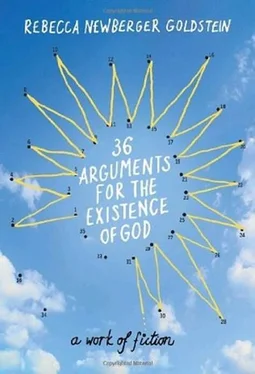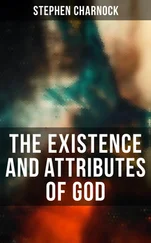This argument has been around since the time of Charles Darwin, and his replies to it still hold.
FLAW 1: For many organs, Premise 2 is false. An eye without a lens can still see, just not as well as an eye with a lens.
FLAW 2: For many other organs, removal of a part, or other alterations, may render it useless for its current function, but the organ could have been useful to the organism for some other function. Insect wings, before they were large enough to be effective for flight, were used as heat-exchange panels. This is also true for most of the molecular mechanisms, such as the flagellum motor, invoked in The New Argument from Irreducible Complexity.
FLAW 3 (the Fallacy of Arguing from Ignorance): There may be biological systems for which we don’t yet know how they may have been useful in simpler versions. But there are obviously many things we don’t yet understand in molecular biology, and, given the huge success that biologists have achieved in explaining so many examples of incremental evolution in other biological systems, it is more reasonable to infer that these gaps will eventually be filled by the day-to-day progress of biology than to invoke a supernatural designer just to explain these temporary puzzles.
COMMENT: This last flaw can be seen as one particular instance of the more general, fallacious Argument from Ignorance:
There are things that we cannot explain yet.
Those things must be attributed to God.
FLAW: Premise 1 is obviously true. If there weren’t things that we could not explain yet, then science would be complete, laboratories and observatories would unplug their computers and convert to condominiums, and all departments of science would be converted to departments of the history of science. Science is only in business because there are things we have not explained yet. So we cannot infer from the existence of genuine, ongoing science that there must be a God. In other words, Premise 2 does not follow from Premise 1.
C. The Argument from the Paucity of Benign Mutations
Evolution is powered by random mutations and natural selection.
Organisms are complex, improbable systems, and by the laws of probability any change is astronomically more likely to be for the worse than for the better.
The majority of mutations would be deadly for the organism (from 2).
The amount of time it would take for all the benign mutations needed for the assembly of an organ to appear by chance is preposterously long (from 3).
In order for evolution to work, something outside of evolution had to bias the process of mutation, increasing the number of benign ones (from 4).
Something outside of the mechanism of biological change-the Prime Mutator-must bias the process of mutations for evolution to work (from 5).
The only entity that is both powerful enough and purposeful enough to be the Prime Mutator is God.
God exists.
FLAW: Evolution does not require infinitesimally improbable mutations, such as a fully formed eye appearing out of the blue in a single generation, because (a) mutations can have small effects (tissue that is slightly more transparent, or cells that are slightly more sensitive to light), and mutations contributing to these effects can accumulate over time; (b) for any sexually reproducing organism, the necessary mutations do not have to have occurred one after another in a single line of descendants, but could have appeared independently in thousands of separate organisms, each mutating at random, and the necessary combinations could come together as the organisms have mated and exchanged genes; (c) life on Earth has had a vast amount of time to accumulate the necessary mutations (almost four billion years).
D. The Argument from the Original Replicator
Evolution is the process by which an organism evolves from simpler ancestors.
Evolution by itself cannot explain how the original ancestor-the first living thing-came into existence (from 1).
The theory of natural selection can deal with this problem only by saying that the first living thing evolved out of non-living matter (from 2).
That original non-living matter (call it the Original Replicator) must be capable of (a) self-replication, (b) generating a functioning mechanism out of surrounding matter to protect itself against falling apart, and (c) surviving slight mutations to itself that will then result in slightly different replicators.
The Original Replicator is complex (from 4).
The Original Replicator is too complex to have arisen from purely physical processes (from 5 and The Classical Teleological Argument). For example, DNA, which currently carries the replicated design of organisms, cannot be the Original Replicator, because DNA molecules require a complex system of proteins to remain stable and to replicate, and could not have arisen from natural processes before complex life existed.
Natural selection cannot explain the complexity of the Original Replicator (from 3 and 6).
The Original Replicator must have been created rather than have evolved (from 7 and The Classical Teleological Argument).
Anything that was created requires a Creator.
God exists.
FLAW 1: Premise 6 states that a replicator, because of its complexity, cannot have arisen from natural processes, i.e., by way of natural selection. But the mathematician John von Neumann proved in the 1950s that it is theoretically possible for a simple physical system to make exact copies of itself from surrounding materials. Since then, biologists and chemists have identified a number of naturally occurring molecules and crystals that can replicate in ways that could lead to natural selection (in particular, that allow random variations to be preserved in the copies). Once a molecule replicates, the process of natural selection can kick in, and the replicator can accumulate matter and become more complex, eventually leading to precursors of the replication system used by living organisms today.
FLAW 2: Even without von Neumann’s work (which not everyone accepts as conclusive), to conclude the existence of God from our not yet knowing how to explain the Original Replicator is to rely on The Argument from Ignorance.
4. The Argument from the Big Bang
The Big Bang, according to the best scientific opinion of our day, was the beginning of the physical universe, including not only matter and energy, but space and time and the laws of physics.
The universe came to be ex nihilo (from 1).
Something outside the universe, including outside its physical laws, must have brought the universe into existence (from 2).
Only God could exist outside the universe.
God must have caused the universe to exist (from 3 and 4).
God exists.
The Big Bang is based on the observed expansion of the universe, with galaxies rushing away from one another. The implication is that, if we run the film of the universe backward from the present, the universe must continuously contract, all the way back to a single point. The theory of the Big Bang is that the universe exploded into existence about fourteen billion years ago.
FLAW 1: Cosmologists themselves do not all agree that the Big Bang is a “singularity”-the sudden appearance of space, time, and physical laws from inexplicable nothingness. The Big Bang may represent the lawful emergence of a new universe from a previously existing one. In that case, it would be superfluous to invoke God to explain the emergence of something from nothing.
FLAW 2: The Argument from the Big Bang has all the flaws of The Cosmological Argument-it passes the buck from the mystery of the origin of the universe to the mystery of the origin of God, and it extends the notion of “cause” outside the domain of events covered by natural laws (also known as “the universe”), where it no longer makes sense.
Читать дальше












